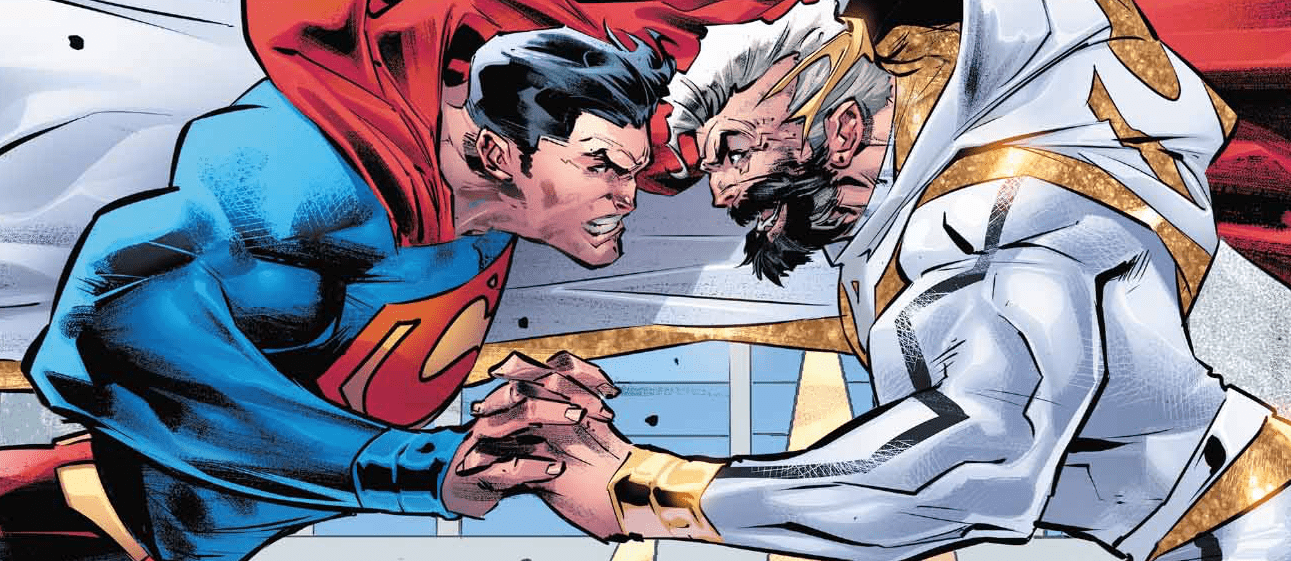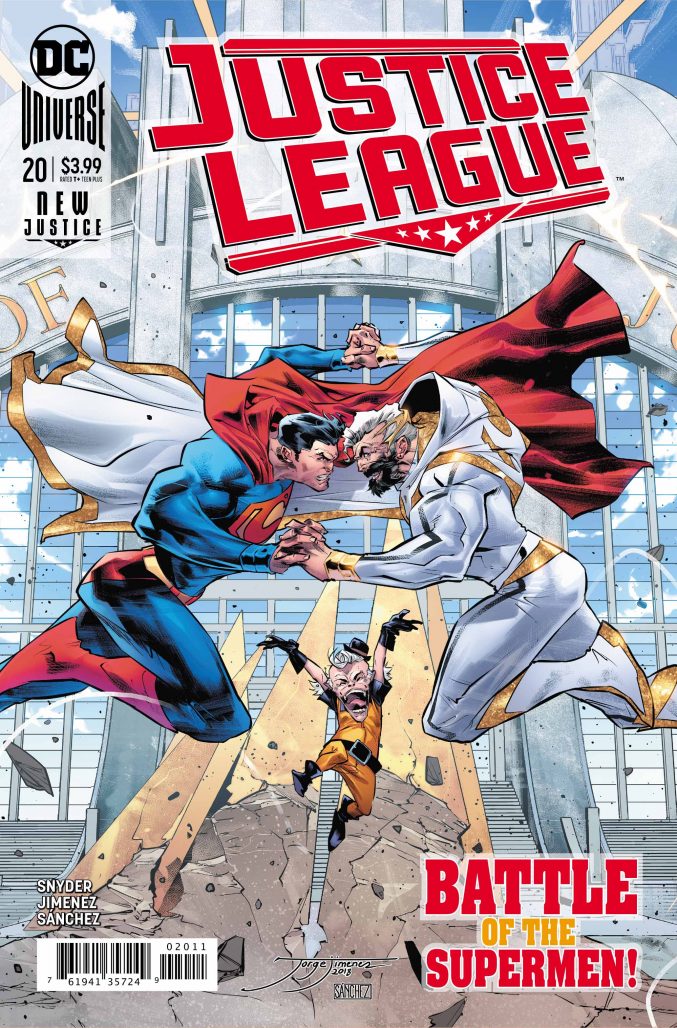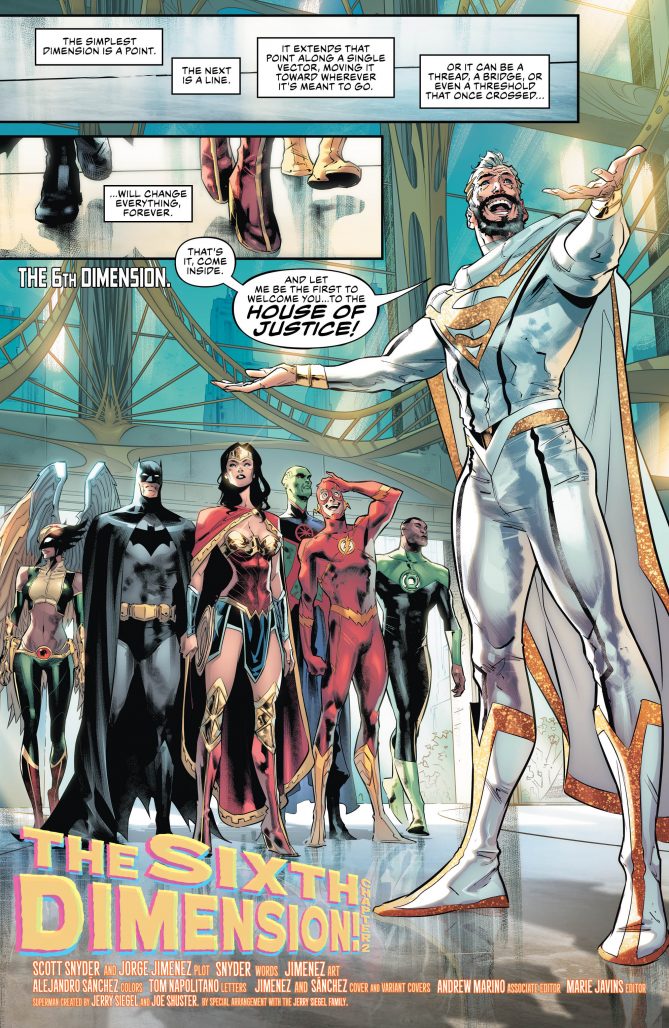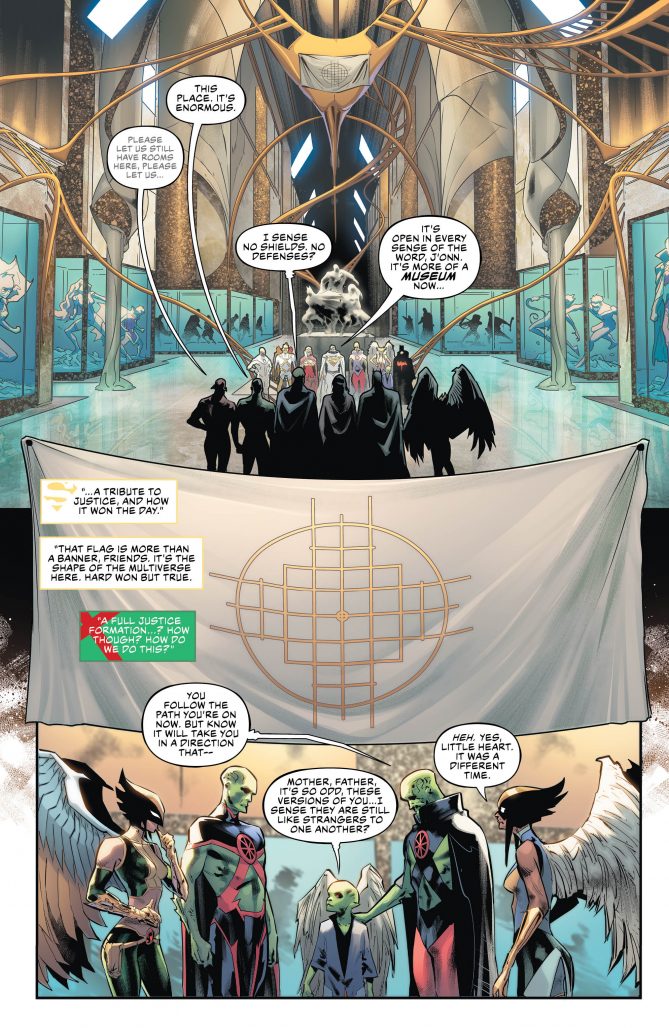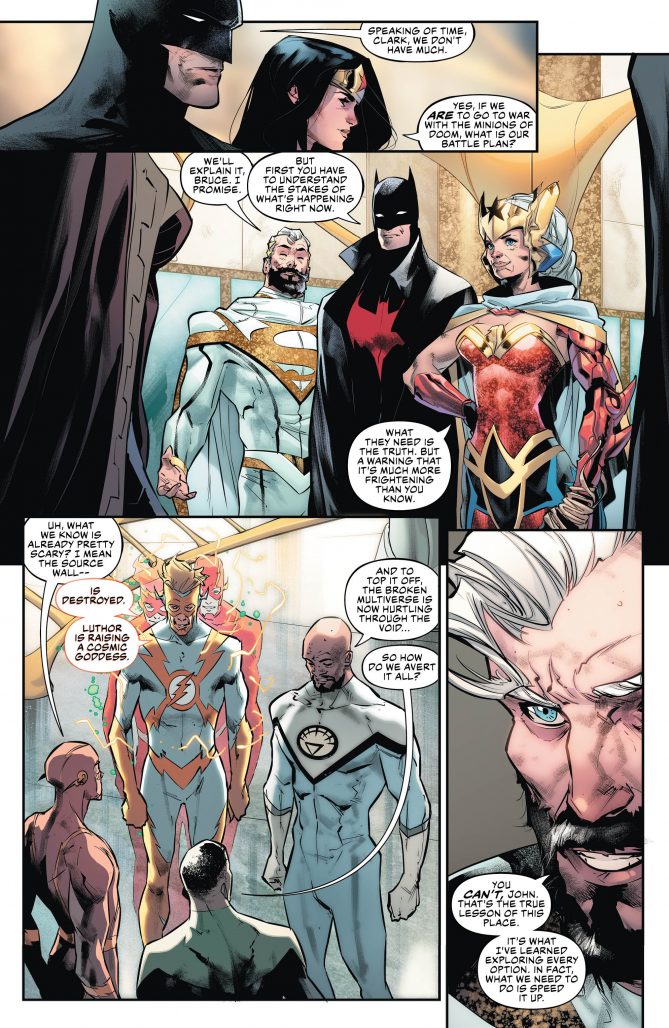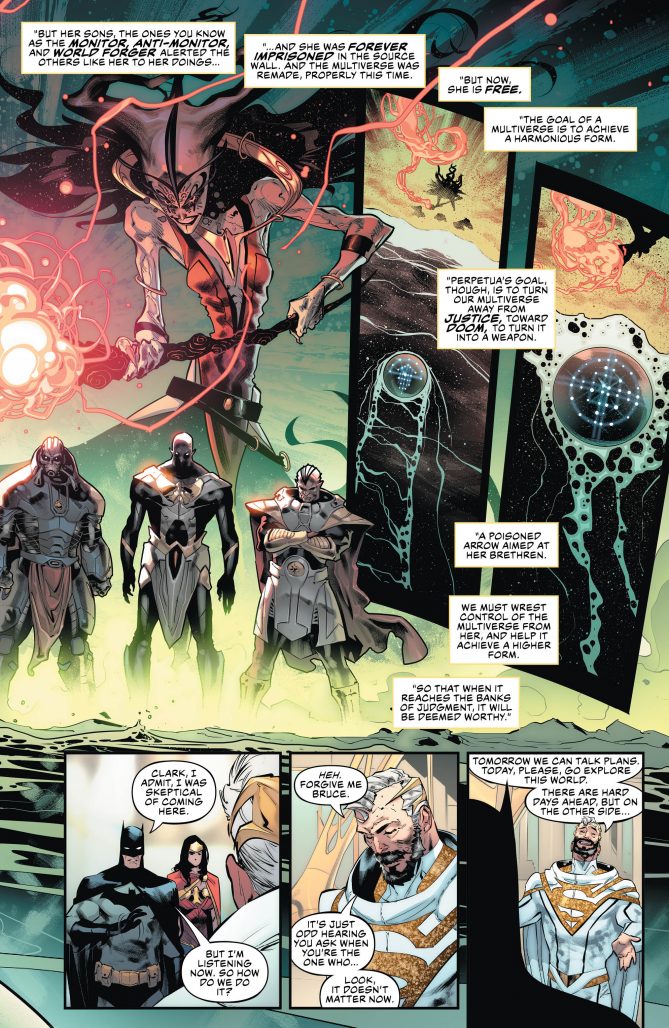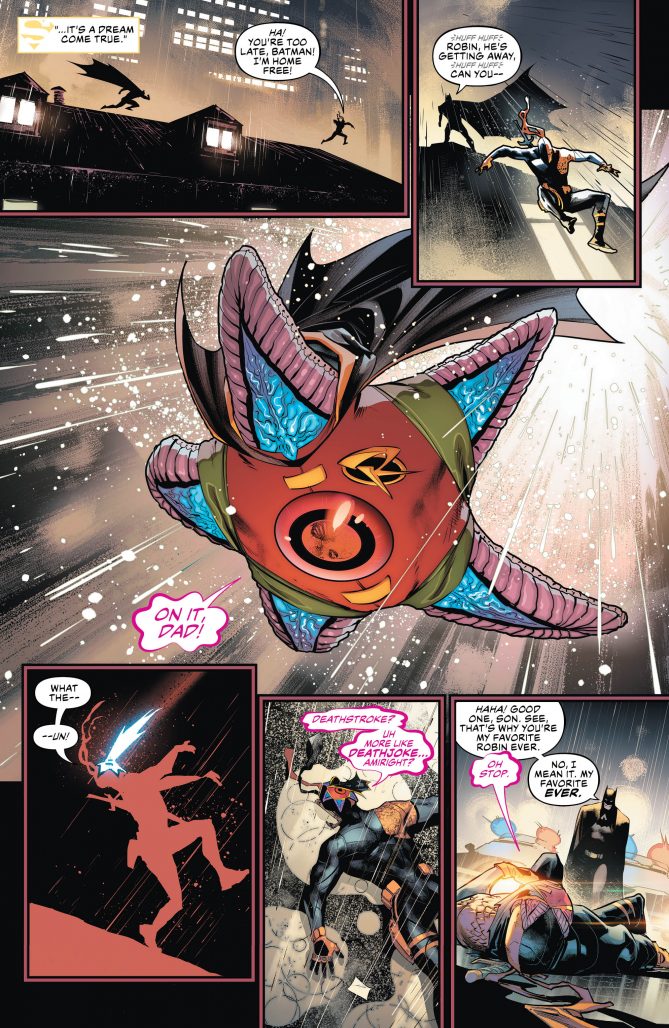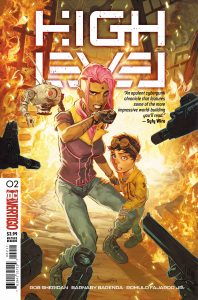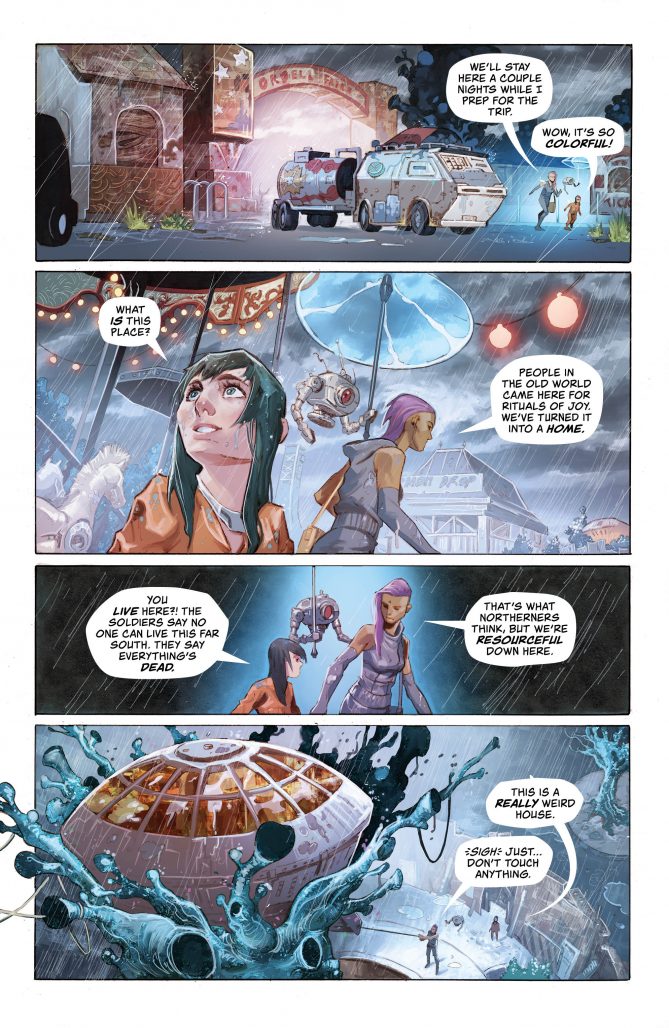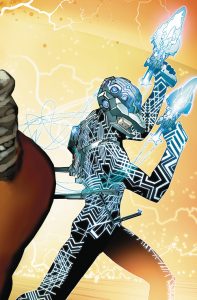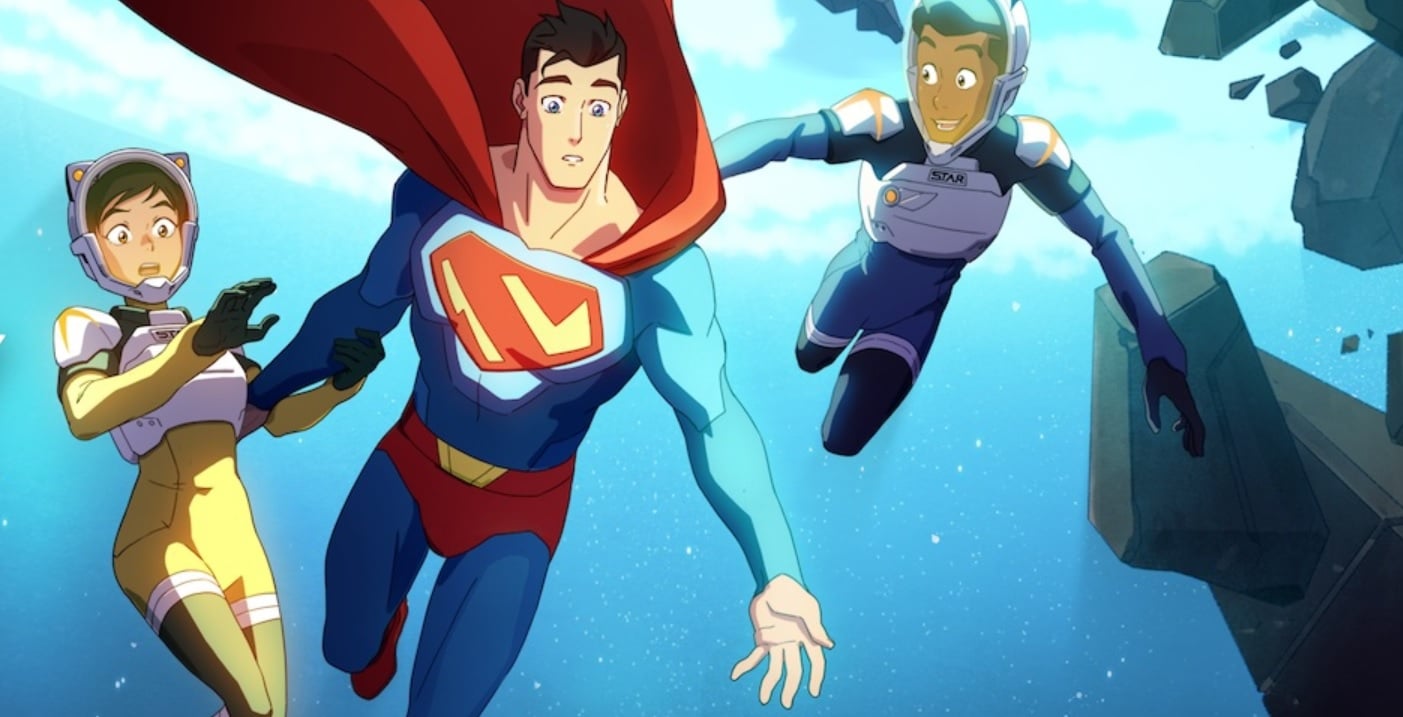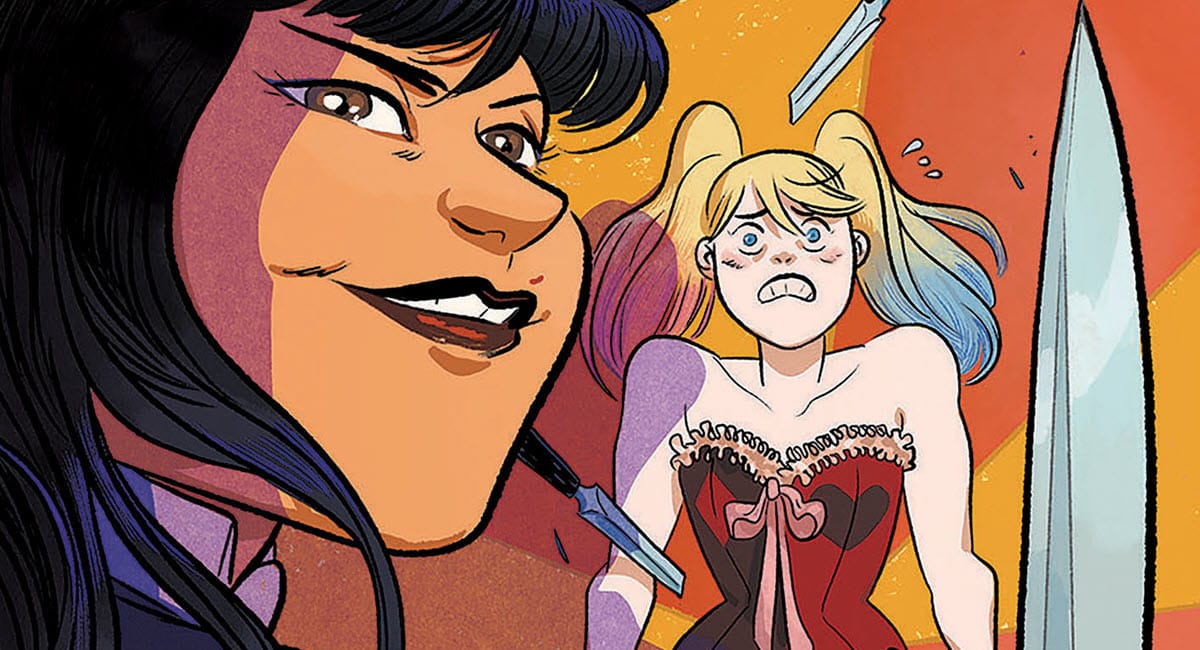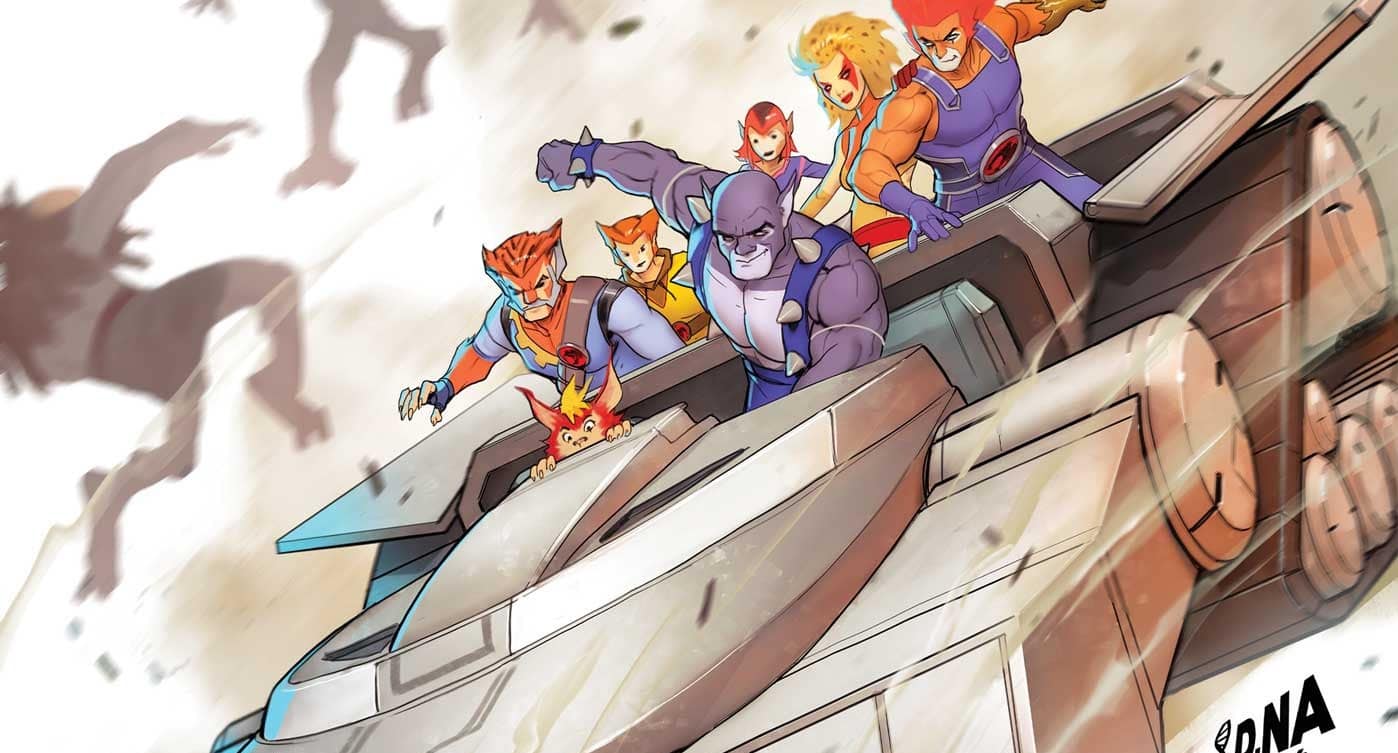DC Comics is trying something new. In the wake of their Rebirth initiative, the publisher has rapidly expanded its content to include diverse new imprints such as Wildstorm, Jinxworld, Wonder Comics, Black Label, Young Animal, Ink, and Zoom. As their lineup expands, it can be hard to figure out what to pick up each week. That’s what our team is here to help with, every Wednesday, with the DC Round-Up!
THIS WEEK: Justice League #20 gives us one heck of a good-looking alternate future.
Note: the reviews below contain spoilers. If you want a quick, spoiler-free buy/pass recommendation on the comics in question, check out the bottom of the article for our final verdict.
 Justice League #20
Justice League #20
Writer: Scott Snyder
Artist: Jorge Jimenez
Colors: Alejandro Sanchez
Letters: Tom Napolitano
I’ll get to the content of this book in a minute, but first things first, can someone please check on Jorge Jimenez? The guy clearly drew his heart out on this week’s Justice League #20 and I’m concerned…that was a terrible line (and I’m sorry), but the point stands. Armed with Alejandro Sanchez colors, the Jimenez issues of this ongoing Justice League run have uniformly blown me away, and this current sixth dimension arc is no exception. Jimenez’s linework in these comics nimbly oscillates between familiar DC style and a look all its own, and as a result there’s hardly a page without an eye-popping or iconic panel.
In this issue, writer Scott Snyder’s script (on which Jimenez is credited as a co-plotter) really makes the most of the artist’s vast skills and abilities. Jimenez draws with a pristine style, his clean lines lending well to the grandiose. He’s the perfect choice for a story like this, which features an alternate future utopia, one that our heroes would, of course, be foolish to take for surface value. Depictions of the future of the DC universe are common, to the point they’ve really started to run together in my head. This one, however, benefits from the context Snyder, Jimenez, and their other collaborators have so far worked hard to build into this run.
This most recent iteration of Justice League continues to be an overarching story of optimism versus pessimism, of polemic world views played out in a series of increasingly consequential skirmishes between the League and the Lex Luthor-helmed Legion of Doom. Luthor believes the imperiled multiverse to be best served by a severe, selfish approach from those who have the most power, while the League of course fights to keep on keeping on, to trust humanity and the wider universe to persevere and overcome any and all bad actors. This makes the current story arc about a utopian future all the more consequential, because on the surface it would seem to confirm that the heroes were right all along. On the surface.
As a reader, I badly wanted to believe throughout this issue that everything I was seeing—from Hawkgirl and Martian Manhunter being happily coupled to the Flashes having merged into one jovial super flash—was exactly as it seemed, that the heroes had triumphed and the world was better for it. And Jimenez’s designs of aged-yet-contented Justice League mainstays made it all the more plausible. The guy draws a great gray head of hair and a fantastic retirement smile. It’s really just a credit to the creators here that in spite of my many years reading superhero comics, I was still able to convince myself that hey, maybe this ending was the real deal. Never mind that I knew the actual Superman had been thrust into darkness, never mind that the mischievous Mister Mxyzptlk was involved, never mind that future solicitations all but guarantee that the looming big bad is actually the powerful god Perpetua, whom Luthor is just now refurbishing and prepping for battle. The future built in these pages is just so kinetic, plausible, and ideal, that I still found myself wanting to believe despite knowing it was a farce.
Part of how this was accomplished was the use of individual character elements in the service of the whole. We got the merged Barry/Wally Flash palling around with an aged John Stewart (“It’s a Flash Fact, brother!”), we got Dianna touring a Themyscira recovering from an epic magical war (a nice nod to sister series, Justice League Dark), and we got a shining and sunny Gotham City, now protected by a Dick Grayson Batman who’d taken the mantle after his mentor made an ultimate sacrifice (the logical and satisfying end to the Batman story, from a certain point of view). We essentially got everything that many DC Comics fans (including myself) badly want for the ultimate future of their favorite characters, even if it goes against the conflict-driven nature of basic story.
In Justice League #20, Snyder and Jimenez doled these future revelations out like a trail of breadcrumbs, leading us through the dark woods filled with monsters on every side. It’s a really immersive way to double down and thoroughly remind the audience of all of the mounting stakes in this larger, increasingly-complex story. None of what we’re seeing as an audience is real, at least not yet anyway, but it’s still being dangled there on each page in beautiful fashion for us to consume, seemingly saying this is what awaits if our heroes can overcome their plight.
Speaking of which, the end is a great bubble burst of a down note, too, leaving us with lasting images of the real trapped Superman struggling in the dark as the faux future version shows up to sneer and mock and initiate a conversation. Oh, how sinister. And on a closing note, I’d just like to leave you all with this preview page that features Jarro-Robin, presented without comment…
Verdict: Buy
 High Level #2
High Level #2
Writer: Rob Sheridan
Artist: Barnaby Bagenda
Colorist: Romulo Fajardo Jr.
Letterer: Nate Piekos of Blambot
It’s only two issues in, but High Level is starting to remind me of old school Vertigo in the best possible way. The world-building has been intricate and efficient, creating a complex and thoughtful setting that does quite a bit of work for this story. What I’ve liked about this comic most, however, is that the story clearly has something really smart to say, be it about society, about class, about geography, about the stations we as individuals are born to, or about any number of other things. I really don’t know exactly where the creative team is going with the world they’ve drawn us into, what grander questions they have to ask, and that level of unpredictability has made the comic all the more interesting.
That’s the 20,000 foot view. On a smaller scale, both issues of this book have just been really well executed. Bagenda is both subtle and imaginative in his work here, a nigh-perfect choice to deliver a setting with hints of both squalor and utopia running throughout. Sheridan’s scripts, meanwhile, have given us the heavy amounts of exposition needed to orient within a sci-fi world without ever tipping into that drier space where dialogue begins to feel like an info dump. This second issue even had a clear episodic story structure to it, complete with high emotional stakes and a satisfying payoff for both of the main characters.
Simply put, if someone was to ask me what I liked about High Level, I’d probably say this comic is fun as hell, a dystopian and fearless sci-fi romp. It’s also a testament to this book that it manages to tread the near-future disaster ground that it does and still feel almost entirely fresh, borrowing little from the many other creator-owned comics in recent years that have occupied similar space. I just hope this book gets the length of run it needs to get us to the intended ending.
Verdict: Buy
Round-Up
Holy plot twists! Electric Warriors #5 sure packs them in, putting out one of the most compressed superhero comics I’ve read in awhile. This is a delicate high-wire act of storytelling, and with one issue left, the creators have set themselves up with everything they need to land it. Here’s hoping they pull it off.
- Another series headed for a finale is The Wild Storm, due to wrap in June. The Wild Storm #21 was just as great as the previous issue, albeit very different, with more talking and less bonkers destruction. I wrote about this series last month, so I’ll keep this brief: this remains among my favorite DC comics.
- So, I have to admit Teen Titans has won me over. To be frank, I didn’t like this run at its start. The new characters seemed gimmicky, the tone gratuitously severe. Recent issues, however, have changed my opinion. The character work has been superb, with each team member harboring compelling secrets and humanizing motives. Now in Teen Titans #28, we get a new crossover with Deathstroke, and the result is fantastic. Also, we learn Deathstroke gets his haircut at a barbershop staffed by Marv, George, and Len…a nice nod to Titans history.
- Batman #67 is a prolonged chase with little dialogue, a feat of visual storytelling by artists Lee Weeks and Jorge Fornes (whose work fits together seamlessly). This current Knightmares arc has been deeply psychology and impossible to predict. I’m enjoying it.
- Finally, Jamal Campbell continues doing breakout work on Naomi. This is the third straight issue in which I’ve paused to savor the high quality of his artwork. Naomi #3 is quieter than prior installments, which allows Campbell to show his versatility via emotional, understated scenes. Absolutely stellar work from a rising star.
Miss any of our earlier reviews? Check out our full archive!



